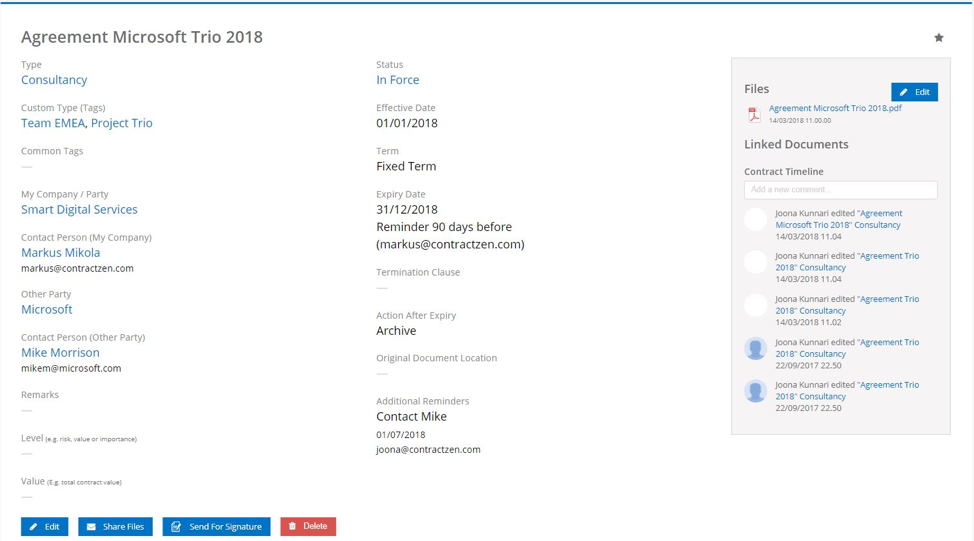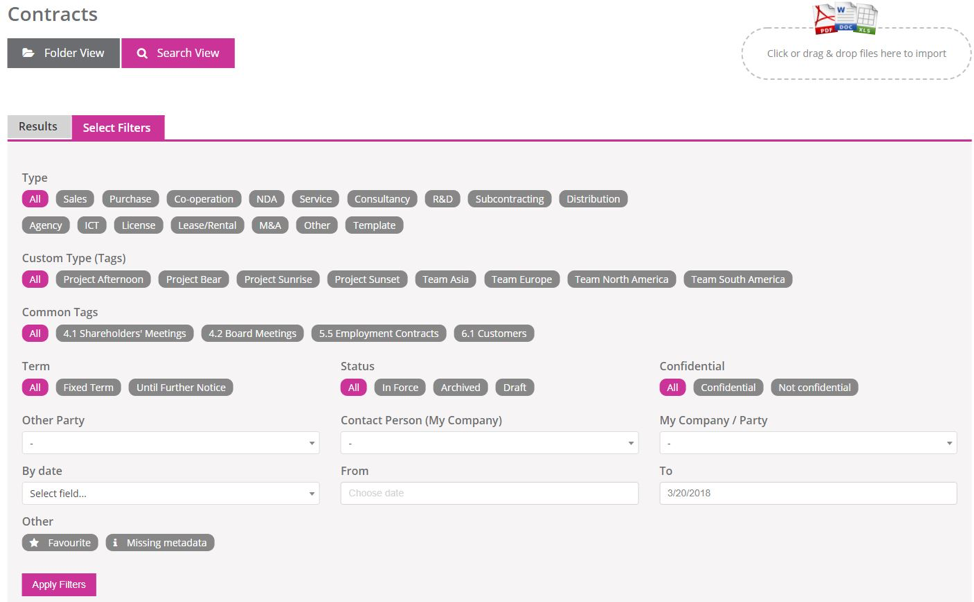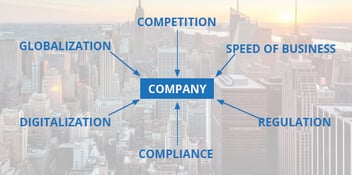3 Benefits of Using Metadata to Organize Your Documents
One of the largest benefits of cloud-based document storage is supposed to be that it’s easier to organize and keep track of. Yet even now, we’ve found that 20% of all contracts globally are permanently missing. They’re just gone.
The problem is that even with digital documents, we’re still organizing them the same way as paper files: folders inside folders inside folders. This nesting doll storage method makes it easy for important pieces of information to hide or get lost, takes your employees more time to find what they need, and makes your organization look sloppy to partners and clients that witness this.
Further, it’s costing your business money to be this disorganized with your contracts and other processes. A study by the International Association for Contract & Commercial Management found that “the average corporation could boost its bottom line by almost 10% if it invested in improving the quality of contracting. For many companies – especially those in more complex, project-based industries – the prize could be much higher – perhaps as much as 15%.”
This is why services with metadata-driven storage and organization, where contracts and documents are stored based on different properties and tags, are so ideal. Data is organized based on the type of information it is, rather than only based on which document it’s contained in.

This allows you to store contracts and other files digitally while fully taking advantage of the benefits digital storage has to bring. The following are a sampling of how such a system can impact your business.
Employees don’t waste time organizing
A TechZone survey found that it takes workers up to eight attempts or 25 minutes to find the right information or document when they’re searching for it. Two-thirds of searches took at least three attempts. Clearly, document organization isn’t just for aesthetics or nit-picking – it has a real impact on how your employees can perform their jobs.
Metadata-driven organization improves this in several ways. First of all, because documents are organized by metadata tags, you can easily connect related documents together in multiple ways. Unlike folders, where each document can only belong to one, tags let you create smarter relationships between multiple documents and automatically build dynamic folders.
It also doesn’t take much time to get up and running with metadata documents. Services like ours offer templates that let you get started quickly by customizing sets developed by experts and successful ContractZen customers, as opposed to building an analog document from scratch. And if you have paper versions from your backlog to store and keep track of, you can easily upload and edit multiple documents at a time.
Everyone stays on top of to-dos
Digital, metadata-driven contract management also makes productivity and project management easier. Firstly, there’s the reduced friction and time that results from the organizational improvements. When contract-related work is easier to complete, more work gets done, given that 80% of business activities and projects include dealing with contracts in one way or another.
Using an online platform to manage them brings the benefit of integrations, algorithms, and more. For example, employees can create saved searches to keep updated and create reports on current or upcoming contracts, a search that would be not only time-consuming but shockingly tedious with any other storage method.

You can also send automated reminders for due dates and other important events, either via notification or through integration with calendar tools like Outlook. And of course, technology this advanced will be secure and accessible on any device.
Teams collaborate better
Finally, digital, metadata-driven document organization makes collaboration and communication easier within your team. Files are interactive, with users able to comment on and have full conversations around different documents, as opposed to maintaining dozens of different email threads and attachments.
Employees can also follow any new activity on documents and tags for projects they’re involved in, making it simpler to see what your coworkers and collaborators are up to without asking.
Having everything organized in one spot also makes calls and meetings easier as well. Especially since some tools have meeting management (including ContractZen), being able to create hubs and links for important information, create datarooms to share files, and schedule calls in the same place that documents live, streamlines internal systems a great deal.
Start tagging
Tools focused on metadata organization may seem very different from the paper documents many businesses are still used to, but they’re fixing old problems and inefficiencies. By adopting a new tool and process for organizing information, you’ll be able to change how your team works in other ways than just contract storage processes. They’ll have more time and less complicated work to complete with it.



